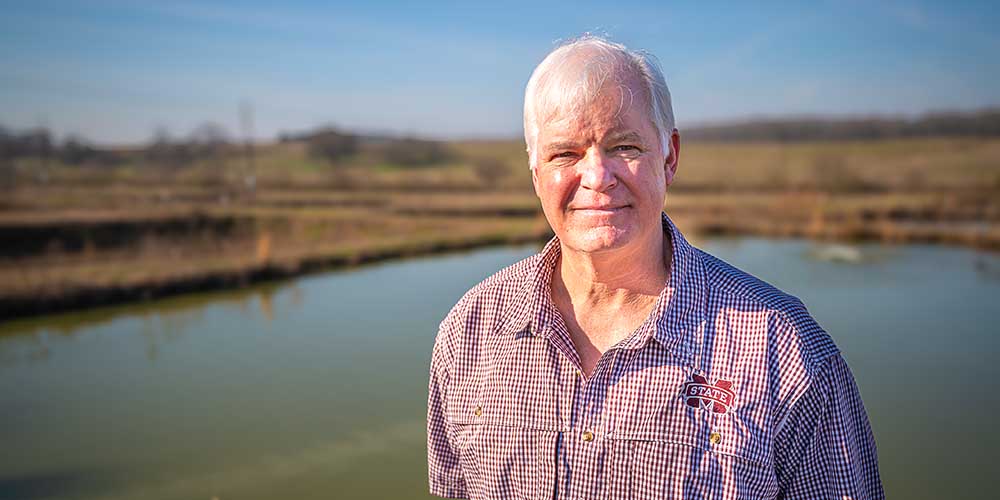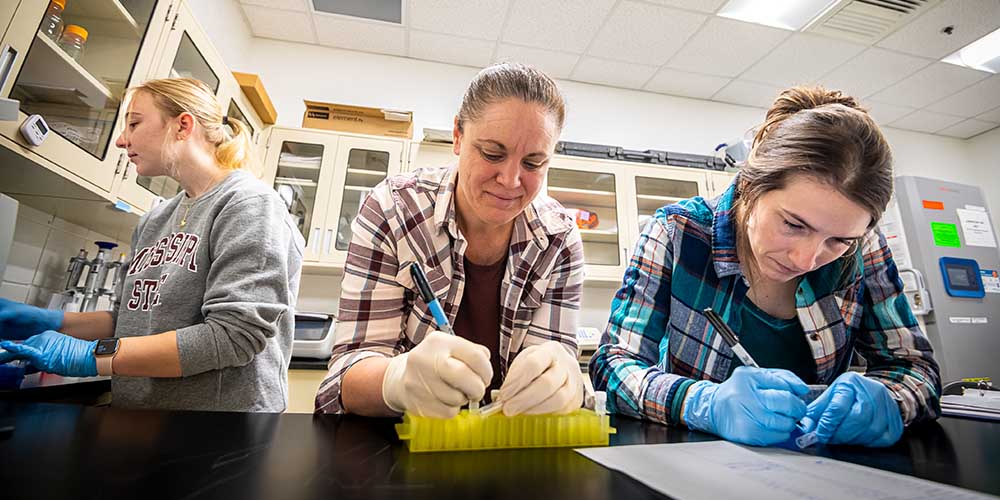Related Stories
Interactions Stories

FWRC Scientists Look to Drones to Identify Potential Flight Disruptions
Wildlife residing near airports can pose threats to aircraft and themselves. Dr. Ray Iglay, principal investigator and assistant professor of wildlife ecology, and his team of FWRC scientists are using small Unmanned Aircraft Systems (sUAS), commonly known as drones, to do the wildlife surveillance work at airports traditionally done by biologists. Iglay said that getting accurate counts of wildlife is difficult because they can be hidden or camouflaged. Iglay and his team worked on testing the drones at local airports and on designing software that would detect the animals, identifying both their location within the landscape and their species. This effort is part of a larger research collaboration among MSU, the Ohio Field Station of USDA/APHIS Wildlife Services National Wildlife Research Center, and the Federal Aviation Administration, or FAA.
Iglay said that the project aimed to provide a system to the FAA that will allow them to monitor wildlife using sUAS and inform mitigation efforts in aircraft-wildlife incidents.
2021

What's for Dinner?
Southern aquaculture, especially catfish farming in Mississippi, faces significant challenges from migratory waterbirds, particularly the double-crested cormorant. These birds, attracted by the dense fish populations in aquaculture ponds, cause millions of dollars in losses each year. A study by Dr. Brian Davis and his team found that cormorants consume up to $12 million in catfish annually, and when factoring in bird deterrent costs, the total financial impact is around $64.7 million per year. While various methods, like disrupting bird roosts, have been tried, there is no perfect solution. Research is ongoing, with new methods, such as drones, being explored.
Additionally, a study on scaup ducks found that their impact on fish farms varies with the season, suggesting farmers should focus on bird management during colder months when ducks are more likely to consume fish. Davis emphasizes the need for continuous research and evolving management practices to address these conflicts as the aquaculture industry grows.
2023

Monitoring Resistance
Dr. Dana Morin, a wildlife assistant professor at Mississippi State, is studying the role of wildlife in the spread of antimicrobial resistance (AMR), which makes infections harder to treat. AMR can be transmitted through bacteria, fungi, and other pathogens that evolve resistance to medications. Morin is focusing on how species like black bears, deer, and ducks, with their diverse ecologies and interactions with humans, could spread AMR. She collaborates with Dr. John Brooks from the USDA to analyze bacterial cultures and DNA from animal fecal samples, investigating genes linked to AMR. Additionally, Morin is exploring the use of dung beetles as a cost-effective method for identifying AMR hotspots in the environment.
Her research aims to understand how wildlife movements and human interactions contribute to the spread of AMR, ultimately helping predict and prevent its transmission.